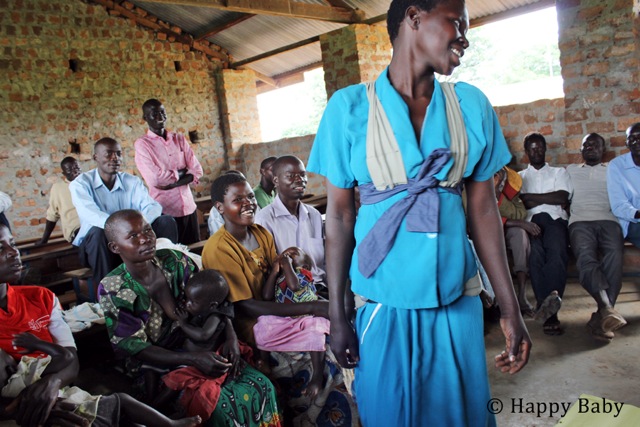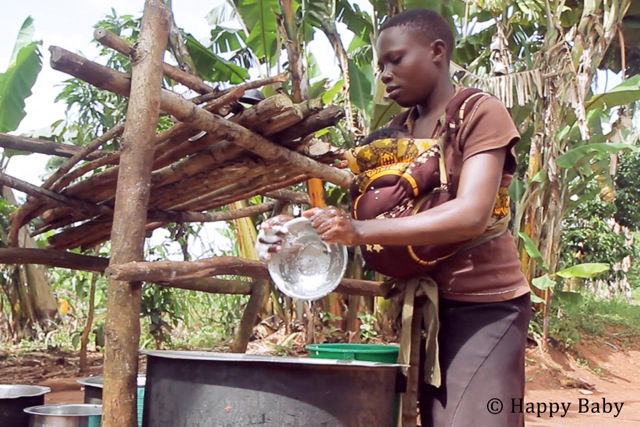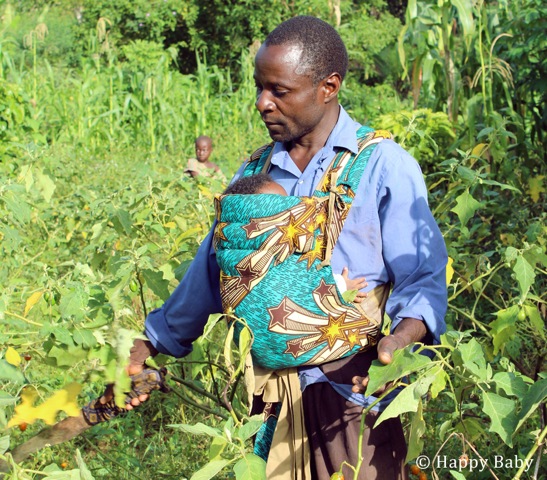Cansu Akarsu

During my short career as a designer I have been a true nerd, spending all my free time participating in every workshop and design competition I found from all fields. Life is easy when you are learning, especially when one recognition follows the other, and motivates you to work on anything you love to work on. Still, I realize now that all the competitions, exhibitions, and networking events are far from the real recognition that comes with a village mother sparing the few dollars she earns to buy the product you have designed – this is how one falls in love with social design. Designing in real life and carrying out the process in the field is, on one hand, more frustrating and challenging, and on the other hand it is more meaningful, fun, and provides a unique learning experience.
Recently I had the privilege to lead the design process of Happy Baby, a non-profit design project of a low-cost ergonomic baby carrier to be used by mothers and fathers and to be produced locally in developing countries, starting with Uganda. After a year of community involved design process, with the completion of the piloting phase, the production of hand-made carriers has started locally in Uganda and the impacts of the baby carrier on the lives of parents and babies has been monitored. Feel free to read more about Happy Baby on our website and support us by sharing our video (see below).

During this first experience I had in the field, there have been several moments when I was both motivated and challenged as a young designer and when I simply had to leave my own opinions behind and serve to the community’s wishes.
In the early phases of the process, we brought in various kinds of prototypes to understand the preferences of people. In the community meetings, we included a design that looked very similar to the traditional way of carrying babies. It turned out to be the only prototype that no father was willing to wear because the traditional way of carrying was associated with womanhood. When trying to find out about the users’ choice of color, cultural beliefs were more powerful than aesthetic concerns. For instance people believed that wearing red was dangerous because it attracted lightning.
Following the community’s directions, interacting with local families, and changing the design in the field have shown us new possibilities and limitations which we would not have thought of from behind our desks, and which made our job as designers more fun and meaningful than it has ever been. During the piloting phase, we got closer with our users to monitor the usage of the carrier and improve it with their feedback.

The first time Happy Baby Carrier was going to be used in real life by locally selected families, one of these families had low-weight twins much smaller than the intended size of the carrier. We had not tested Happy Baby with babies that small before, and yet we simply had no choice but to give the carrier to the family – you do not want to go against the community’s choice! I truly felt the heavy responsibility of these small lives. We visited the family at home and together we practiced placing each baby in a carrier. A feature of Happy Baby Carrier for carrying newborns is the hip support which is folded once and the carrier is put on high on the waist. We call it ‘Make your carrier smaller when your baby is small!’ In the case of the low-weight babies we visited, we worked with the family and tried folding the hip support twice to create a tiny pocket for the babies. It was something we had never anticipated yet it worked perfectly! With credits to my teammates, we have monitored the babies regularly and the baby carrier had a huge impact on the development of these twin babies.

Another unforgettable memory I have is from a second family we visited in their home. When we entered their house, I was irritated by the screams of the baby covered in layers of blankets on a mattress on the floor – her mother said ‘She never stops crying.’ We intentionally visited the family when the father was back from work to find every member of the family at home. Among the five kids they had, the father had not carried a single one of them until their toddler years, so he was not interested in their crying little baby either. The moment he tried the baby carrier for the first time was miraculous. The little girl looked at his face with curiosity, stopped crying and fell asleep in a few minutes. The man was in shock, and from then on, he carried his baby every morning to the garden. During a follow-up meeting when we asked about his challenges with using the carrier, his answer made everyone smile: ‘My biggest challenge is that I have a second wife and family in another village who complains that I love this family more. I think I will have to buy a new baby carrier for her.’
From watching a drunk man in the village passing by repeating the benefits of baby carrying to seeing parents on the street wearing the baby carrier inside out; from having some babies trying to stand up in the carrier and others peeing on our lap, to the everyday adventures of experiencing village life in Uganda, the Happy Baby design process has been an unforgettable experience.
Happy Baby Pilot Study in Nkokonjeru from Happy Baby on Vimeo.
Cansu Akarsu is a young designer from Istanbul with experience in products and services. During her five year career she has studied and worked in different parts of the world, most recently in Uganda. Her main motivation for designing is to have a positive social impact. She holds a Bachelors degree in Industrial Design. Together, with her team of designers and researchers, they completed the Happy Baby piloting phase in September 2013. She can be contacted at: http://www.linkedin.com/in/cansuakarsu and her work can be viewed here.











Leave a Reply
You must be logged in to post a comment.